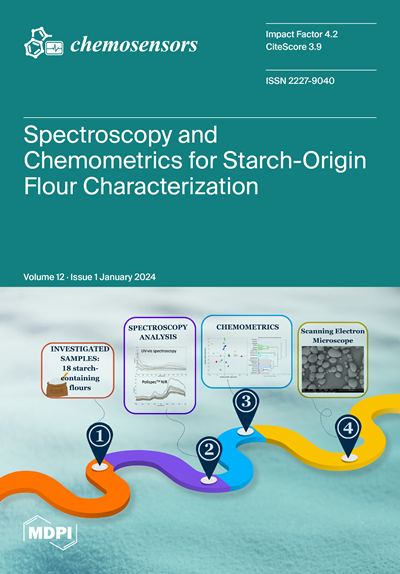Enzyme-Free Signal Amplification Strategy via Chaperone Copolymer-Accelerated Hybridization for Highly Sensitive Detection of Adenosine
IF 3.7
3区 工程技术
Q2 CHEMISTRY, ANALYTICAL
引用次数: 0
Abstract
Adenosine is a vital biological small molecule that regulates various physiological processes in the human body. A high expression of adenosine in cells can facilitate tumor growth. Therefore, detecting adenosine is crucial for early disease diagnosis. In this paper, we designed a fluorescent biosensor for the sensitive detection of adenosine based on the cationic comb-type copolymer PLL-g-Dex for assisted rapid hybridization of nucleic acids at room temperature. In this strategy, adenosine preferentially binds to the aptamer immobilized on the surface of magnetic nanobeads, releasing free aDNA in solution as the primer strand, which rapidly forms DNA nanowires with auxiliary probes of bDNA with the assistance of PLL-g-Dex. SYBR Green I is embedded in DNA duplexes to generate strong fluorescence. The experimental results showed that PLL-g-Dex promotes DNA hybridization reactions at room temperature to form ultra-long DNA nanowires, thus achieving signal amplification and shortening the detection time. In addition, magnetic nanobeads can reduce the background signal during the reaction. Compared with several previous studies on the fluorescence detection of adenosine, this strategy has a lower detection limit of 2.32 nM. Furthermore, this novel system exhibited a good detection performance even under complex environments, such as serum, providing some reference for the quantitative detection of adenosine in early disease diagnosis.基于伴侣共聚物加速杂交的无酶信号扩增策略用于高灵敏度检测腺苷
腺苷是调节人体各种生理过程的重要生物小分子。腺苷在细胞中的高表达可以促进肿瘤的生长。因此,检测腺苷对于疾病的早期诊断至关重要。本文设计了一种基于阳离子梳型共聚物PLL-g-Dex的腺苷敏感荧光生物传感器,用于辅助核酸在室温下快速杂交。在该策略中,腺苷优先与固定在磁性纳米球表面的适体结合,释放溶液中的游离aDNA作为引物链,在PLL-g-Dex的辅助下,与bDNA辅助探针快速形成DNA纳米线。SYBR Green I嵌入DNA双链中产生强荧光。实验结果表明,PLL-g-Dex在室温下促进DNA杂交反应形成超长DNA纳米线,从而实现信号放大,缩短检测时间。此外,磁性纳米球可以减少反应过程中的背景信号。与以往几项荧光检测腺苷的研究相比,该策略的检出限较低,为2.32 nM。此外,该系统在血清等复杂环境下也具有良好的检测性能,为早期疾病诊断中腺苷的定量检测提供了一定参考。
本文章由计算机程序翻译,如有差异,请以英文原文为准。
求助全文
约1分钟内获得全文
求助全文
来源期刊

Chemosensors
Chemistry-Analytical Chemistry
CiteScore
5.00
自引率
9.50%
发文量
450
审稿时长
11 weeks
期刊介绍:
Chemosensors (ISSN 2227-9040; CODEN: CHEMO9) is an international, scientific, open access journal on the science and technology of chemical sensors published quarterly online by MDPI.The journal is indexed in Scopus, SCIE (Web of Science), CAPlus / SciFinder, Inspec, Engineering Village and other databases.
 求助内容:
求助内容: 应助结果提醒方式:
应助结果提醒方式:


